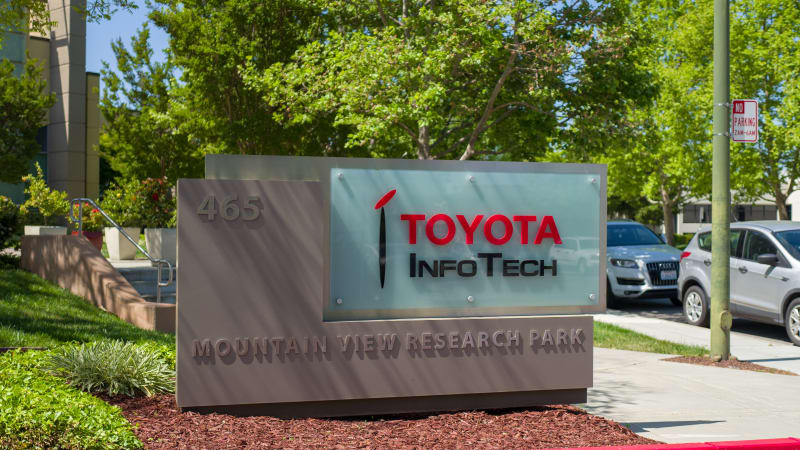That kind of commitment to creating and developing things goes back to at least Henry Ford, whose “tinkering” led to the development of a raft of innovations, not just the moving assembly line and the flathead V8, but even charcoal briquettes (wood was used to build Model Ts; there was scrap, especially from the sawmill; so he thought about it and eventually Kingsford Charcoal became a product).
In an industry that is becoming increasingly defined by ACES — as in autonomous, connected, electrified, shared, although there is something of a Las Vegas gamble to the whole thing — intellectual chops within organizations are becoming more important than the ability to creatively shape sheetmetal or to optimize the output of a downsized, turbocharged engine.
So how do we know how companies are doing in this realm of product and process development?
One of the ways this internal know-how can be quantified is to look at the number of U.S. patents a company has obtained in a given year. That’s something Harrity Patent Analytics, part of law firm Harrity & Harrity, which describes itself as “the nation’s leading patent preparation and prosecution firm,” has codified in what it calls the “Patent 300.” It looks at the number of utility patents — which cover products, processes and machinery — companies have been issued by the U.S. Patent and Trademark Office.
The patent holders include a full suite of companies, organizations and industries, and there are certainly automotive OEMs among them. According to Harrity, the firms that make up the list of 300 represent those that have obtained 54 percent of the more than 300,000 U.S. patents issued in 2018.
The firm’s analysis shows that 68.5% of the patents encompassed in its report are in the electrical, software and computer-related technologies, with 19% being mechanical. Which pretty much defines the auto industry.
What isn’t surprising is that the OEM that ranks highest is Toyota. It is ranked sixth on the overall list. Only IBM, Samsung, Canon, Intel, Alphabet, and GE are above it. Toyota obtained 2,554 U.S. utility patents in 2018.
The spirit of Henry lives on, because the next OEM on the list, at No. 15 with 2,149 U.S. patents, is Ford. According to Harrity, 72% of Ford’s patents are in the mechanical category and 23% electrical, which is not wholly unlike Toyota, which had 55% and 25%, respectively.
Hyundai is No. 22, with 1,539 patents. At No. 34, behind Fujifilm (seriously: did you know that company still exists?), is General Motors, with 1,197 patents.
Honda is tied for 43rd, at 958 patents, with TCL, a Chinese consumer electronics company.
Then there is a considerable gap, to position 89, bracketed by chemical company BASF and ag equipment manufacturer Caterpillar, where Porsche is found, with 503 patents.
Nissan makes the top 100, at 97, with 446 U.S. patents.
But then, below the likes of Nike, the State University System of Florida, Whirlpool, Walt Disney, eBay, and even Walmart, there is BMW with 190 U.S. patents in 2018, which allows it to make the top 200, at position 198.
Tied for 234th with a Japanese Chemical firm, Nitto Denko, and a South Korean environmental products company, LSiS, there’s Mazda, with 159 patents.
FCA is tied with semiconductor firm Rambus and defense and aerospace company Northrop Grumman at 244, with 155 patents.
And the last automotive OEM that makes the “Patent 300” is Tata Motors, at 126, which ties it with a company named Waters, which is in the life sciences industry.
So of the top 300 there are 10 automotive OEMs, Toyota, Ford, Hyundai, GM, Honda, Porsche, Nissan, BMW, Mazda, FCA, and Tata. Only the first two have more than 2,000 U.S. utility patents; only the second two have more than 1,000; then starting with Honda and down, the rest are in triple digits.
However, something that isn’t often talked about but which is absolutely the case in the auto industry is that suppliers do a considerable amount of development that is integrated into OEM products transparently. And in this regard, the number of suppliers on the list is impressive.
For example, the top 100 includes Bosch (28), Denso (36) and Continental (100).
Patents are just one indicator of the overall innovativeness of a company, and innovation without market success is irrelevant.
But consider this: The market cap for Toyota is on the order of $199 billion, which is more than GM ($54.2 billion), Ford ($41.1 billion) and FCA ($20.7 billion) combined. So there’s something to be said for invention.





